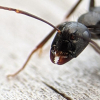We have so much diversity.
Edited by GOCAMPONOTUS, March 29 2024 - 12:01 PM.

Edited by GOCAMPONOTUS, March 29 2024 - 12:01 PM.
Currently keeping: 2 C.vicinus colonies.2 C.sansabeanus. 1 C.leavissimus. 2 C.Ca02. 1 V.pergandei. 4 T.immigrans.1 F.pacifica. 1 C.hyatti
1 M.ergatognya
Trying to get my hands on :C.modoc,A.vercicolor, and Any Honeypots
Currently keeping: 2 C.vicinus colonies.2 C.sansabeanus. 1 C.leavissimus. 2 C.Ca02. 1 V.pergandei. 4 T.immigrans.1 F.pacifica. 1 C.hyatti
1 M.ergatognya
Trying to get my hands on :C.modoc,A.vercicolor, and Any Honeypots
Keeping:
5x - S. molesta (founding) 2x - C. pennsylvanicus (colonies)
4x - C. chromaiodes (colonies)
4x - T. immigrans (founding queens and colonies)
1x - F. subsericea (founding)
Check out my C. nearcticus journal here: https://www.formicul...cticus-journal/
Check out my C. chromaiodes journal here: https://www.formicul...aiodes-journal/
I would say Nevada has the most diversity in the states but Nevada also has some great high altitude ants.
Florida is top 3
1. Southeastern Arizona
2. Southern California
3. Florida.
(not in order)
Edited by GOCAMPONOTUS, March 29 2024 - 4:09 PM.
Currently keeping: 2 C.vicinus colonies.2 C.sansabeanus. 1 C.leavissimus. 2 C.Ca02. 1 V.pergandei. 4 T.immigrans.1 F.pacifica. 1 C.hyatti
1 M.ergatognya
Trying to get my hands on :C.modoc,A.vercicolor, and Any Honeypots
Florida is top 3
1. Southeastern Arizona
2. Southern California
3. Florida.
By diverse I mean number of different ant species. Found at University of Michigan News website.
Currently keeping: 2 C.vicinus colonies.2 C.sansabeanus. 1 C.leavissimus. 2 C.Ca02. 1 V.pergandei. 4 T.immigrans.1 F.pacifica. 1 C.hyatti
1 M.ergatognya
Trying to get my hands on :C.modoc,A.vercicolor, and Any Honeypots
By diverse I mean number of different ant species. Found at University of Michigan News website.
I am aware that Formica and some other genera were not polymorphic, and that is why I specified other reasons that the original person would like them. Obviously, Polyergus is not polymorphic, but they are much more interesting in their parasitic habits then an ant which main selling point is majors. If the original person only looks for ants with those specific characteristics, they may miss out on other equally interesting genera, such as Polyergus.NA Pogonomyrmex aren't polymorphic in the sense of having a major caste. They have worker size variaition of a singular worker caste.
You sure? Because P. rugosus really looks like they have majors.
Additionally, Pogonomyrmex is fast growing and not polymorphic, Formica isn't polymorphic, Pheidole is small, Iridomyrmex is non-existent in all of the United States, and Polyergus is not polymorphic - Myrmecocystus is a decent choice, but their majors aren't too distinct, though they do have repletes.For Nevada, a better suggestion for medium size, medium growth rate, and polymorphism (i.e. majors) would be Camponotus.i think i want a medium sized ant that grows medium speed
that is also polymorphis
Edited by The_Gaming-gate, March 30 2024 - 1:03 PM.
Ants are small creatures... but together... they can rule the world.
Anting →
General Anting →
Anting Tips for Southern NevadaStarted by cooIboyJ , Mar 4 2024 |
|

|
||
Anting →
General Anting →
Where should I go in Southern Nevada for ant hunting?Started by cooIboyJ , Mar 1 2024 |
|

|
0 members, 2 guests, 0 anonymous users